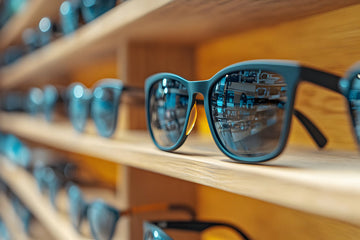There are several myths and facts about wearing sunglasses only for summer sports; however, there are numerous health benefits to wearing sunglasses year-round, especially during the winter.
- MYTH: The sun is weaker in the winter, meaning eyes are safer and less apt to be exposed to damaging UV rays. FACT: Despite the weather, ultraviolet (UV) rays are present year-round and while they can't be seen, their long-term effects are extremely damaging to the eyes.
- MYTH: Protecting the delicate skin around the winter months is unnecessary. FACT: Even though the sun's force is less during the wintertime months, UV exposure is still present. It's important that people protect their eyes when participating in winter sports. Polycarbonate lenses are best for performance and protection, helping protect the eyes from UV rays. Most people don't realize that outdoor winter sports, such as skiing, snowboarding, sledding, figure skating, snowmobiling and ice hockey expose people to unnecessary UV rays. Participants in these types of activities should consider wearing polycarbonate lenses, wraparound sunglasses or athletic snow sport goggles.
- MYTH: The best eye protection is to avoid outdoor sports entirely. FACT: This statement is dramatic, as wearing sunglasses that offer UV protection help protect the eyes from these harmful UV rays.
- MYTH: The sun's UV rays are blocked by cold weather, ice and snow. FACT: Snow is responsible for reflecting nearly 80-percent of all UV radiation. Additionally, UV rays bounce off frozen bodies of water, effectively dousing the skin with double exposure. When it's overcast during the winter, the amount of light that is reflected is often magnified, meaning the eyes are at risk for excess exposure. When outside during the winter months, always wear SPF with a minimum rating of 15, as well as sunglasses that offer UV protection.
- MYTH: Mountains offer more sun protection. FACT: Higher altitudes actually allow for an increased passage of light. For example, UV radiation increases by 3-percent for every 1,213 feet of altitude that is gained. Nearly 80-percent of UV rays are reflected during overcast days or by snow.




